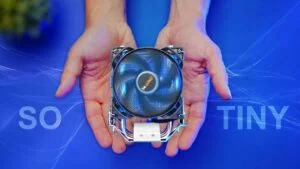Razer Keyboard Switches – How to Pick the RIGHT One

Share:
Table of contents
Ever since we published the Razer Basilisk mouse lineup article, which explained all the options that are available, we have received so many requests to do the same thing for Razer keyboards. We agreed and this was a really good opportunity for us to team up with Razer and talk about all the available Razer switches and keyboards, and which one might be best for you. The specifics of switch type and feel is still a mystery to a lot of people, and while some colour definitions have helped clarify some options like Red linears and Blue clickys there is so much more beyond the colour for you to understand what switch is right for you. A big surprise to me is that most people still think that a mechanical keyboard must be loud and must be clicky, and so we are here to help your fingertips get into the zone, the switch zone.
In this article we will cover the following Razer switches: 1) Membrane, which is soft touch 2) Mecha-Membrane, which is a hybrid between mechanical and membrane 3) Mechanical featuring Linear/Tactile/Clicky, and finally 4) Optical switches actuating at the speed of light. That covers Razer Green, Yellow, Orange, Mecha-Membrane switches, Purple optical, Red optical linear Gen1 and Gen2, and finally the new Razer Analog options, which are super exciting.
What You Need To Know About Switches
The first I want to cover are the most common terms used when talking about keyboard switches. The Actuation Point is how far a key needs to travel downwards before a press has registered. The Actuation Force is the amount of pressure you need to use to get to that actuation point. If you combine high Actuation Point and low Actuation Force you get what is called a Fast Switch. Travel distance is the total travel of the switch until you bottom out. And durability is measured in millions of clicks. Just for reference, if you were to press one switch 5 times per second for a year you would get to about 100 million clicks. Now tactile is a term used commonly when talking about keyboard switches, because it describes the feedback point at the actuation. It can be a clicky point, it could be a soft bump, but tactile as a term is used to describe the feedback. We have three main switch types: Clicky is when an actual clicky point happens at the actuation point, which is both audible and physical. Tactile is when we have a soft bump at the actuation point, and Linear is when there is no feedback at all, just smooth all the way down.
Types of Switches
Let us start at the beginning with membrane switches since almost everyone’s first keyboard used membrane switches. It uses a thin rubberized material and conductive traces below to register a press. They are simple to manufacture and are generally quieter with a soft and cushioned feel, ad that is part of the Razer Cynosa family.
Moving onto the Mecha-Membrane switches, and this is a really cool hybrid where Razer try to bridge the gap between mechanical and membrane with their Mecha-Membrane switches. It has a rubberized dome for all that cushioning as you bottom out, but also really satisfying crispy clicky point for additional feedback. This switch also comes with half-height keycaps for a low-profile keyboard, so the Razer Ornata family are all Mecha-Membrane keyboards.
This brings us to the mechanical keyboard, and this one is gamers favourite because we have such a good variety to choose from and a bit more consistent registration because it uses a spring loaded mechanism and a metal contact to register the actuation. With mechanical switches we have a good variety for vertical movement and obviously different switch types for different feedback, like clicky, linear, or tactile. The Razer Blackwidow family are all mechanical keyboards with two variations, linear and clicky, and these mechanical keyboards generally cost more too.
This brings us to the most premium tier with optical switches, and they can feel the same as regular mechanical switches but the actuation mechanism is different. Instead of a metallic contact inside the switch, there is a beam of light that gets intersected to produce a signal. Technically this is supposed to speed up response times and also eliminate the debounce delay. Whenever a mechanical switch makes the first contact at the actuation point there is a bouncing effect that sends multiple smaller signals before a signal is actually sent, and that time between the actuation and the signal is the debounce delay. With optical switches you eliminate that completely. The Razer Huntsman fits into this optical category with two variations, Clicky or Linear, and this falls into Razer’s premium switch and premium performance category, which is slightly more expensive. Nevertheless, the Huntsman TE TKL model is incredibly well-priced, and especially the 60% model with the incredible Gen2 switches.
And that leads us to the analog direction with the Tartarus Pro, which is the only keypad on the market right now to feature analog controls. It would be kind of cool to see a full analog keyboard from Razer sometime down the line.
If we were to categorize all these Razer switches in the Linear camp we would have the Razer Yellow, the Red optical Gen1 and Gen2, plus the analog switches. In the tactile camp we would have the Razer Orange and then in the clicky category we would have the Razer Green, Razer Purple optical, and the Mecha-Membrane, which is that hybrid mechanical switch.
Linear Switches
Let’s start with Linear switches and to me actuation force and the actuation point are the most important for a Linear switch. The Razer Yellow’s actuate at 45 grams and have a really low actuation point of 1.2mm with a total travel distance of 3.5mm. Razer Yellow are similar to the MX Speed, and if you love fast actuation this is a really good option, especially if you want to do like strafing side to side and don’t want to be resetting the switch all the way. This is why I don’t particularly game with clicky switches for FPS when I need that really fast precise movement.
Then we get into the Red optical linear switches from Razer and they are one of my favorite linear switches. The Gen1 switches actuate at 40 grams, have a really fast actuation point of 1mm and total travel distance of 3.5mm, while Gen2 switches have increased the actuation force to 45 grams based on feedback from the community with a total travel distance of 3.5mm. Based on my experience on the Huntsman TE with the Gen1 switches you really have to train your fingers to not accidentally depress the key because 40 grams is incredibly light and the actuation point of only 1mm is so little travel distance. With the Gen2 they fixed that weight issue so you have to actually apply a little bit of force. I really appreciate the upgrades like silicon dampeners that were applied to each switch, everything was looped giving you much smoother and pleasant travel distance across the entire range, and also no longer did we hear that really nasty pinging that we heard on the Gen1 switches on the Huntsman TE.
To be honest, this whole optical direction for switches is the future because there are 3 main advantages: Durability is much higher than standard mechanical switches, like 100 million clicks minimum for each Razer optical switch, which is just insane. This optical design also allows for lack of debounce delay, which means registrations are instantaneous and it resets faster as well. This gives you confidence since you don’t have to worry about this switch crapping out on you over time, because there are no mechanical parts touching each other to register the switch since it’s all based on lights.
Analog Switches
This leads us back to Razer Analog optical switches on the Tartarus pro and hopefully on other keyboard products in the future. This is a really unique switch for many reasons, for starters it doesn’t have a set actuation point, so this is a really cool way to mimic joystick controls for driving games or where you want a little bit more precision. The motion isn’t just go and stop, but you can actually speed up and slow down. In the software you can actually set where the actuation happens along the entire distance of travel, which opens up so many opportunities for really cool customization for your play style. For example, you can set two actuation points, depending on the distance and the travel distance of the switch. At 1.2mm you could set it to take out a grenade, and when you bottom out the switch it would throw that grenade, but if you decide not to throw it you just don’t fully bottom out.
That opens up a lot of possibilities to create certain macros, but that does require finger readjustment and totally new finger memory. I totally different than a keyboard where you either actuate or you don’t, so you have to retrain your fingers to be able to detect those multiple actuation points. It sounds really cool, but it does require a lot of training as well. I will admit that the whole dual step actuation is super interesting and unique, I’m sure that many people will take advantage of it properly, but for my play style I can’t get my WASD area retrained to utilize the dual step actuation. I would rather use a macro or just keep it simple.
Tactile Switches
Moving on to the Tactile category, and this one is pretty straightforward because Razer only offers a single switch, which is the Razer Orange switch. This model is supposed to be silent and tactile, it actuates at 45 grams, and the actuation point is at 1.9mm but with a full travel distance of 4mm. Now tactile switches are a really good hybrid if you don’t want the full linear response and you don’t particularly want the full crispy clicky point either. The tactile point with the Orange switches is quite soft. I prefer Tactile switches for typing first and then gaming. If you are a touch typist you can just depress that soft point without having to fully bottom out. The sound profile with the Orange switches is also slightly more dampened than what you hear with Linears. These Orange switches are found on Razer’s Pro Type line of keyboards.
Clicky Switches
The Clicky category is exciting because most people who choose that route are looking for certain things when it comes to the clicky point: Is it sharp? Is it light? It is loud? Is it crispy? As I mentioned before, the Razer Green is one of my favorite clicky switches, with 50 grams of actuation force, 1.9mm actuation point and 4mm of travel distance. I like this switch because it’s not too loud, the clicky point is quite crispy, and it’s also not too heavy either so you don’t have to push hard to get past the clicky point.
The Razer Purple optical switch is really exciting because it’s a slightly lighter and faster clicky switch, and it is appropriate for all types of gaming scenarios because of that fast and light actuation. It has a 45 gram actuation force, 1.5mm actuation point and 3.5 million travel distance. This is one of the few clicky switches I can comfortably game on, just because the actuation point is quite high and the switch is lighter too. You can do quick strafing without me needing to reset on the clicky point, which is sometimes an issue with other clicky switches.
And finally we have that hybrid of the Mecha-Membrane switch, which is also clicky, but it’s super interesting because it has that mushy and relatively quiet bottoming out profile, but with an almost instant clicky registration because of a really high actuation point. Despite the clicky point being there just for the feel of it, I’m quite impressed at how nice it feels, and it almost mimics a true mechanical clicky switch. It also surprisingly offers 80 million click durability, just like on the other mechanical switches.
When it comes to my favorite sound profile I choose the Red linear Gen2 switches have that beautiful dampening at the bottom because of the silicon dampeners and also pre-applied lubing. Using the Huntsman Mini just for typing is absolutely wonderful, and I love the upgrades that have carried over from the Gen1 in terms of making the switch slightly heavier.
Conclusion
To bring everything together, it’s kind of cool to have all these switch options from Razer to tailor to your gaming needs. Obviously Razer as a brand have a nice umbrella of switches to choose from, and while they don’t have everything their variety is good enough so that if you are going for a Razer keyboard that you aren’t going to be stuck with only one type/category of gaming switches.
If I was to conclude with my personal recommendations, I can’t wait for the Gen2 Red linear optical switches to be implemented across the entire range, especially the Huntsman TE. I love that TKL form factor, but as soon as it has the Gen2 switches I’m picking one up, that is going to be my go-to gaming keyboard for sure especially when it comes to linear design. I also think that the Razer Analog switches are going to be quite important because we have more variety of analog options on the market already, and so far I feel like Razer’s software implementation of choosing multiple actuation points is good. It is really fleshed out and I like the way you can create certain macros for your game style, plus giving you the whole analog control for driving games. And that is about it, I hope this Razer switches guide has been helpful. If you are looking for a Razer keyboard right now, let me know which one is on your radar and what switches you are gravitating towards. Thanks to Razer for supporting us on this project.





































































